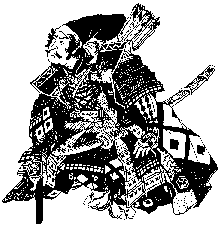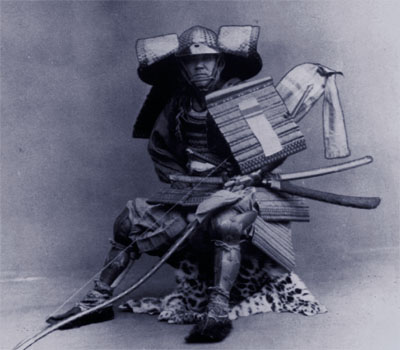Jujitsu
"Gentle" Art of the Samurai

Jujitsu is appropriately labeled as a, "parent art." Practiced hundreds of years ago, jujitsu was the art typically employed by the Samurai warriors of feudal Japan. Jujitsu developed out of necessity. Feudal Japan was fraught with conflict. Villagers, warriors, religious leaders, and nobles required protection. On the battlefields of Japan, samurai were often clad in armor. Effective sword disarms quickly focused on joint manipulations. Samurai who had their hands and arms crippled after the execution of a devastating joint lock were no longer a useful part of an attacker's army. Indeed, joints were often the only parts of a Samurai exposed and vulnerable. Manipulating armor clad individuals demanded a working knowledge of body physics. To that end, jujitsu focuses on effective utilization of both attacker and defender energy. The "Ju" in Jujitsu symbolizes suppleness. Master practitioners employ techniques that permit the weak to overcome the strong with minimal exertion. The militaty roots of jujitsu are extremely apparent in the modern jujitsu syllabus. The techniques of jujitsu include locks, drops, joint immobilizations, chokes, pins, and tactical pressure point strikes.
After 1882, Jujitsu lost its place to Judo as the Japan's most official and practiced martial art. The demilitarization of Japanese society necessitated a less lethal form of self defense and combat. Arts like Aikido and Judo derived their techniques from Jujitsu and emphasize many of the same principles. The most systematized and modern form of Jujitsu exists today in the Japanese Special Police Academa. Called Taiho-Jitsu, many ancient techniques are taught to selective officers of the national police force.
Jujitsu survives today in several forms. Its derivative arts speak volumes of Jujitsu's usefulness and place in Japanese society. Furthermore, the art of aiki-jujitsu persists in a few Western martial art schools. Japanese nobles refined many Jujitsu techniques and chose to focus on the redirection of an attacker's energy. Manipulation of "ki" allowed practitioners to expend less physical strength and maximize the art's effectiveness. O'Sensei Ueshiba Morihei was a Danzan-Ryu Jujitsu master prior to developing his more spiritually-based art of Aikido. Danzan Ryu Aiki Jujitsu boasts an impressive lineage of martial artists like Sokaku Takeda. The Purple Dragon School of Self Defense understands Jujitsu as an integral part of Japanese martial history. Jujitsu techniques are included in the school's comprehensive and integral syllabus.
